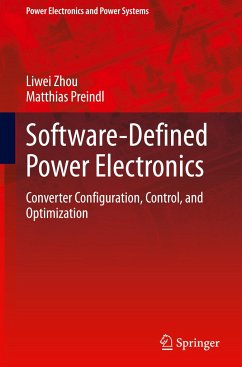
Power System Inertia, Strength, and RoCoF
Versandkostenfrei!
Erscheint vorauss. 27. Februar 2026
147,99 €
inkl. MwSt.

PAYBACK Punkte
74 °P sammeln!
This book highlights recent advancements in the area of power and energy systems. Electrical networks all around the world are experiencing the integration of various types of energy resources, including renewable energies with intermittent and variable generation and energy storage systems which are greatly replacing the existing fossil-fuel driven synchronous generators. These systems are forming the future of power generation and delivery systems. This radical change is significantly affecting the key assumption of the system in terms of their strength, inertia, and rate of change of freque...
This book highlights recent advancements in the area of power and energy systems. Electrical networks all around the world are experiencing the integration of various types of energy resources, including renewable energies with intermittent and variable generation and energy storage systems which are greatly replacing the existing fossil-fuel driven synchronous generators. These systems are forming the future of power generation and delivery systems. This radical change is significantly affecting the key assumption of the system in terms of their strength, inertia, and rate of change of frequency (RoCoF). These are extremely critical aspects when analyzing and strengthening the stability of the power systems with high penetration of renewable energies. There has been significant interest in this area over the past decade. Various methods have been proposed to measure the system’s inertia, strength, and RoCoF. These parameters have been proposed to be used widely in designing, planning, and operating such systems, and they are currently a key area of interest for researchers and utilities around the world. The key emphasis of this book is on the various measurement and estimation techniques in renewable energy-dominated electrical power systems. Interesting topics such as networks’ operation and technology accommodation are presented in detail from these perspectives. The chapters in this book introduce existing and new modelling approaches, control, and management methods.












